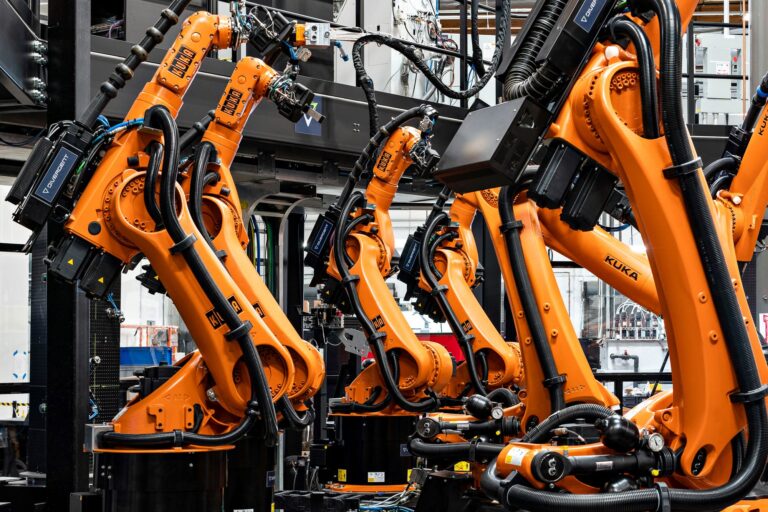The world of manufacturing is dominated by talk of digital transformation. While the term is well understood, it generally means something different to everybody you speak to. So what are the fundamental principles of success?
To help leaders shape a strategy that harnesses the advantages of digital manufacturing for your business, they shine a spotlight on the 3 essential areas of digital transformation for manufacturers.
Data
Manufacturing is a big beast, so it makes sense for them to define processes by specialism such as design, engineering, production, inspection, and quality management. When they look behind the scenes there’s even more to it – procurement, supply chain management, etc, etc.
The result of this from a data perspective is siloes. An abundance of task-specific software generates insight nobody ever connects. When they speak to customers, something they always say is – if you can’t feel the power of all the data you generate, it’s likely data is holding your business back.
One of the most powerful things they do for customers is to put their data to work. In simple terms, they make sure it is centralized, mined, and harnessed. By taking data out of siloes, we’re able to complete the picture and work it to its fullest potential opening up a world of insight.
With the power of data at your fingertips, you can optimize products and production, finetune your processes, and solve problems you never knew existed. But that’s just the start. The insight they gather by establishing a digitalized manufacturing process not only shines a light on weaknesses to do with products, production, or process – it hastens the shift they will see towards ever more innovative, technology-powered solutions.
When harnessed correctly, data can inform the way they design things. It can reduce production weaknesses making it possible to manufacture things that would never have been possible. It can dictate how long products last, what materials they’re made from, how much energy is used in the production process, and ultimately how products should be treated at the end of life.
Data is the first and most important pillar of digital transformation. It’s the bit that takes them from analog to digital. Get this bit right and everything else will follow.

Empowered people
Every single manufactured product they see around them in the world today is the result of human ingenuity and endeavor. Empowered people have always furthered the human experience via manufacturing – but they’re now entering an era where technology and data can give our ideas wings. Companies that seize this potential, will feel the fullest benefits of digital transformation.
The bonus to manufacturing companies is that people and technology do different things that are symbiotic and potentially incredibly complementary. Where they dream and innovate, technology creates a framework of untapped insight. Where they understand the lived impacts of the products they use – technology sees only information. Its dispassionate reading of data can guide development down pathways they would never have thought of, solving problems that never even arose.
Technology is at its most potent when it is used to empower them as makers. It empowers designers by opening up entirely new creative avenues to explore. It empowers engineers by helping to simulate and test products safely and iteratively in the virtual world. It empowers them at a production level by optimizing processes and planning to ensure they’re reaching maximum potential, safely and sustainably. It empowers maintenance teams with the information they need to maximize uptime. Perhaps most importantly, it empowers them to continually improve the things they make and the way they make them by creating a digital feedback loop that ensures constant improvement.
With more efficient processes in place, you can empower your people by redeploying them into more skilled roles that complement your technology capabilities. Your teams can be free to work on ideas, experiment, and iterate, pushing product development into new territory rather than solving problems.
When procuring technology to drive your digital transformation, technology needs to be harnessed to maximize the potential of people and people need to be harnessed to maximize the potential of technology. It is essential to think about the end-to-end process spanning everything from design and procurement to inspection and quality management. This way you can build a system that generates data and insights to improve the performance of your people and production.

Flexible production
The role modern technologies such as additives have played in the digital transformation story cannot be overstated. Very simply, they enable the physical manifestation of the digital process.
As things stand, many manufacturing facilities are built around legacy infrastructure and processes. Take cars, planes, or bicycles as an example – most today are still made and assembled in the traditional way.
Legacy infrastructure is often a limiting factor, but all too often, production is partially digitalized on top of an analog process.
Over the coming years, the path of slow and steady iteration and versioning of parts and products will be replaced by disruption and reinvention as they have never known. In this age where human ideas are taken into entirely new realms by technology such as generative design – clean sheet architecture will enable them to fundamentally rethink everyday products. This is a development that only becomes possible with cutting-edge additive and subtractive techniques.
If you have an innovation that will change your sector – you need to get it into production straight away without entirely reconfiguring and re-specifying your factory. To keep ahead of change, manufacturing firms will need to be able to 180 their entire operations very quickly. To put this another way, rigid, analog production methods will render manufacturers slow and uncompetitive.
Developing the software stack to digitalize all of your processes from design through to inspection and service life is one thing, and in a lot of ways it is the springboard every company needs – but developing a software and hardware stack that works entirely in synergy is the greatest reward. Achieving this will put your business at the pioneering edge of development in your sector, realizing digital transformation in its truest form.
For digital transformation to take hold, they depend heavily on a new breed of production infrastructure that is flexible, antifragile, and able to turn digital innovations into a physical reality.
Click on the following link Metrologically Speaking to read more such blogs about the Metrology Industry.









